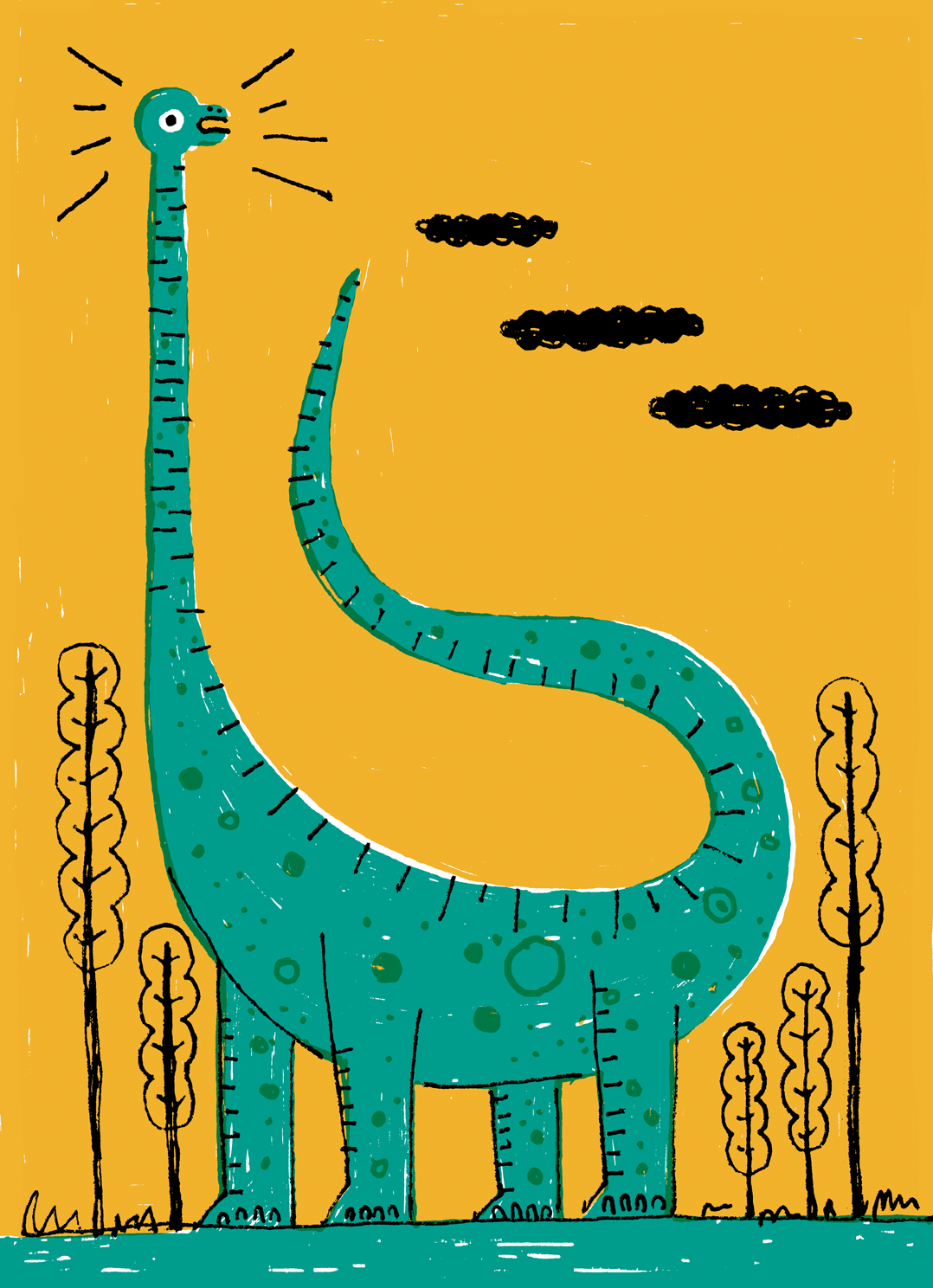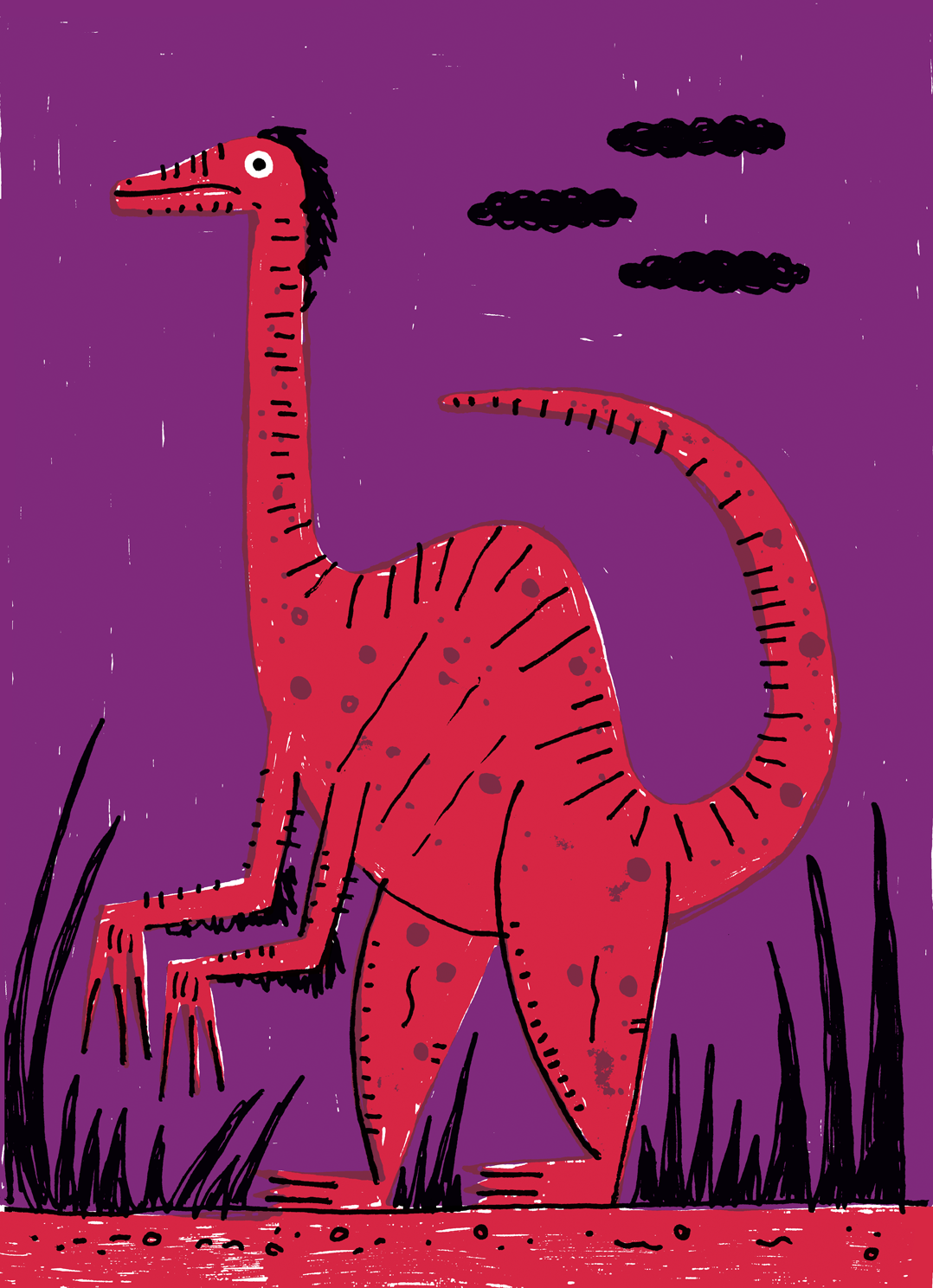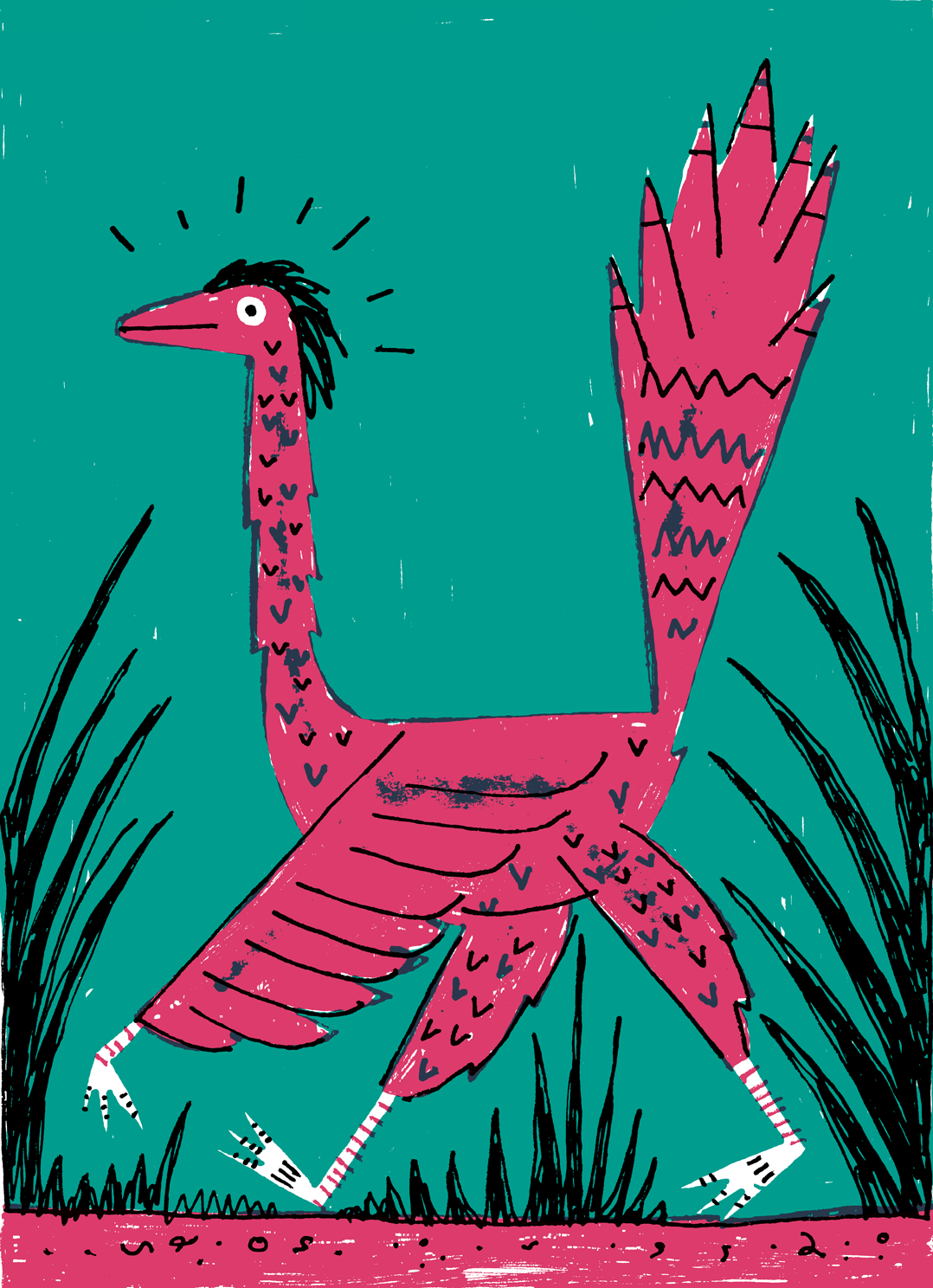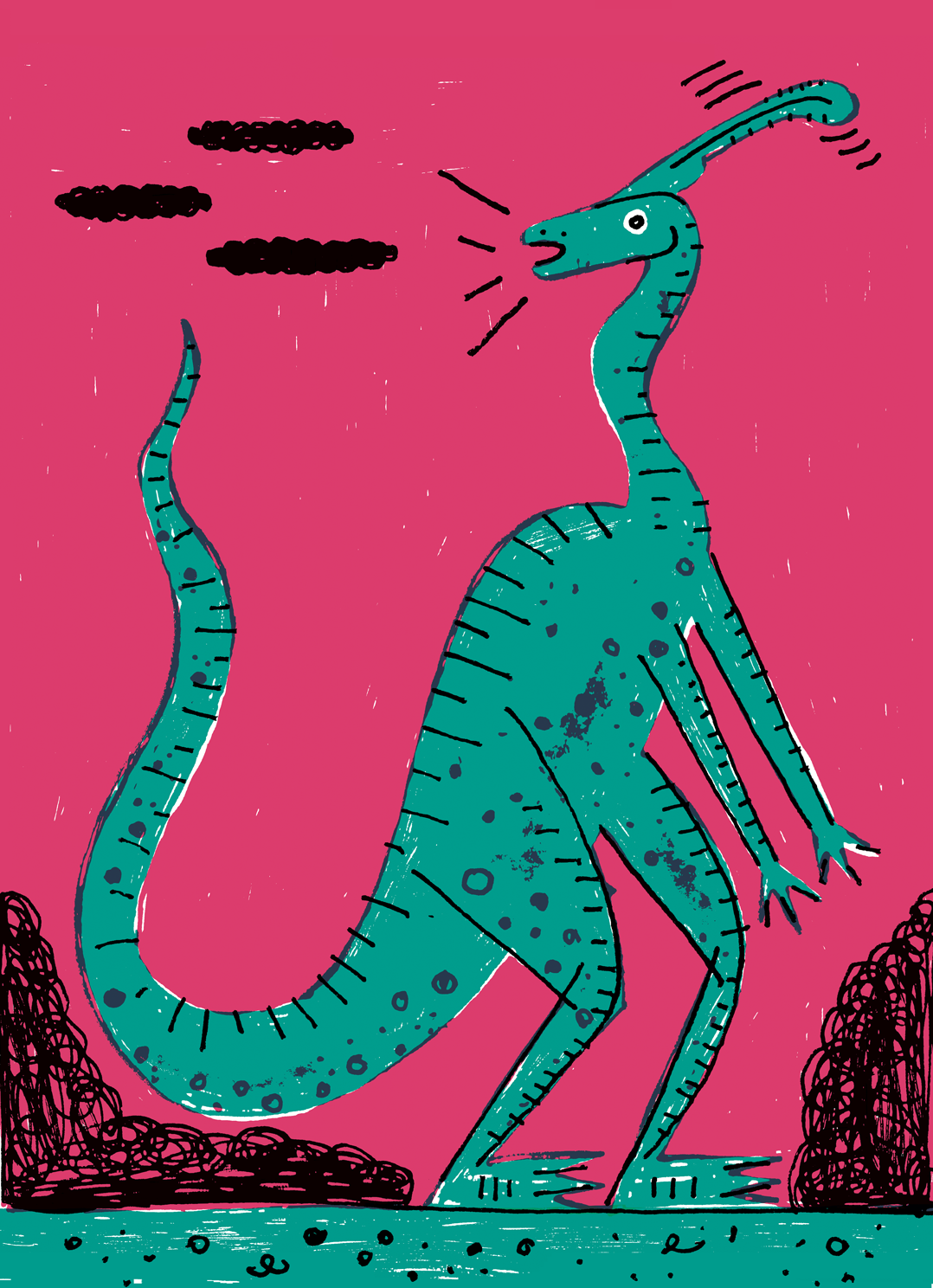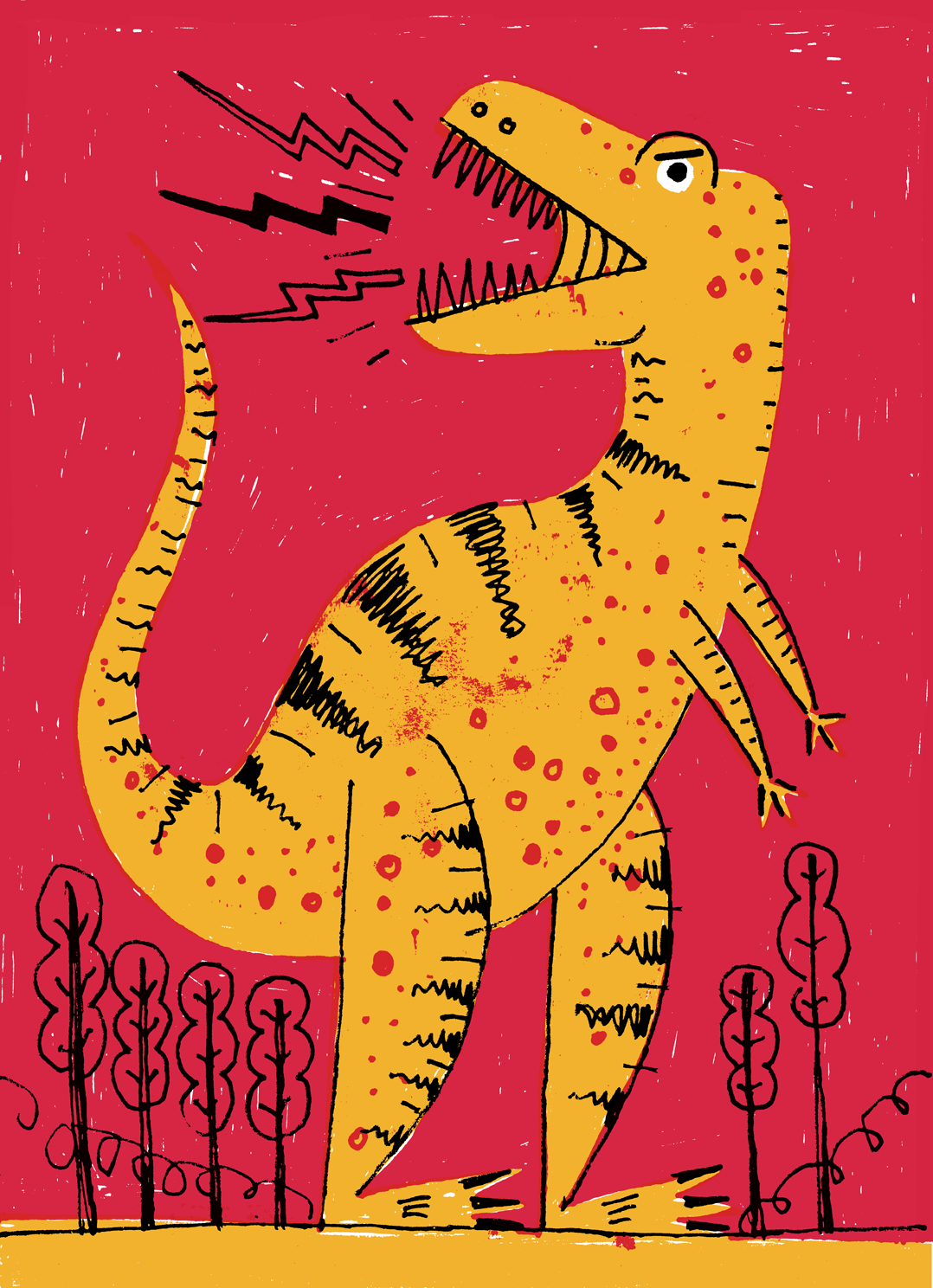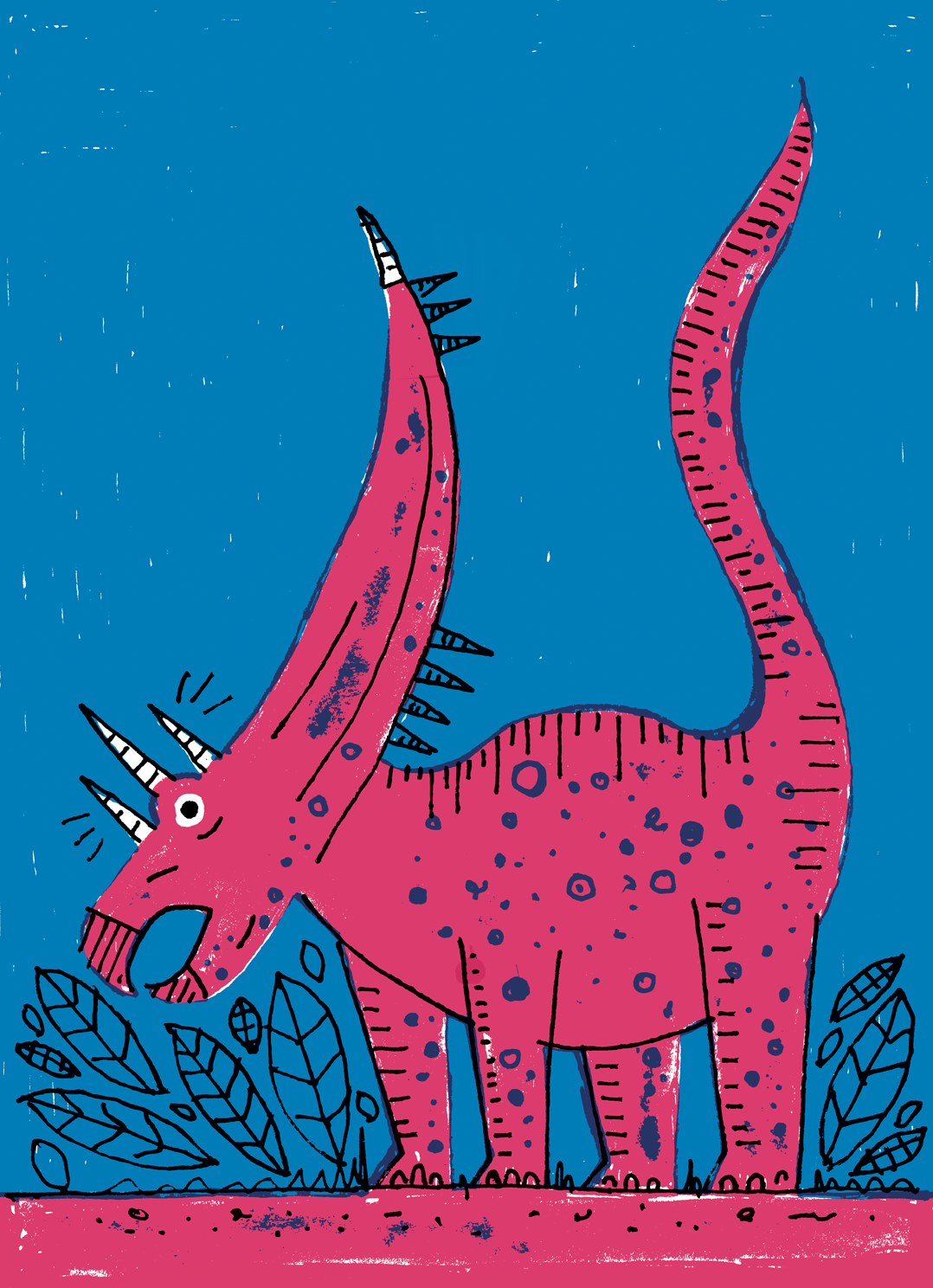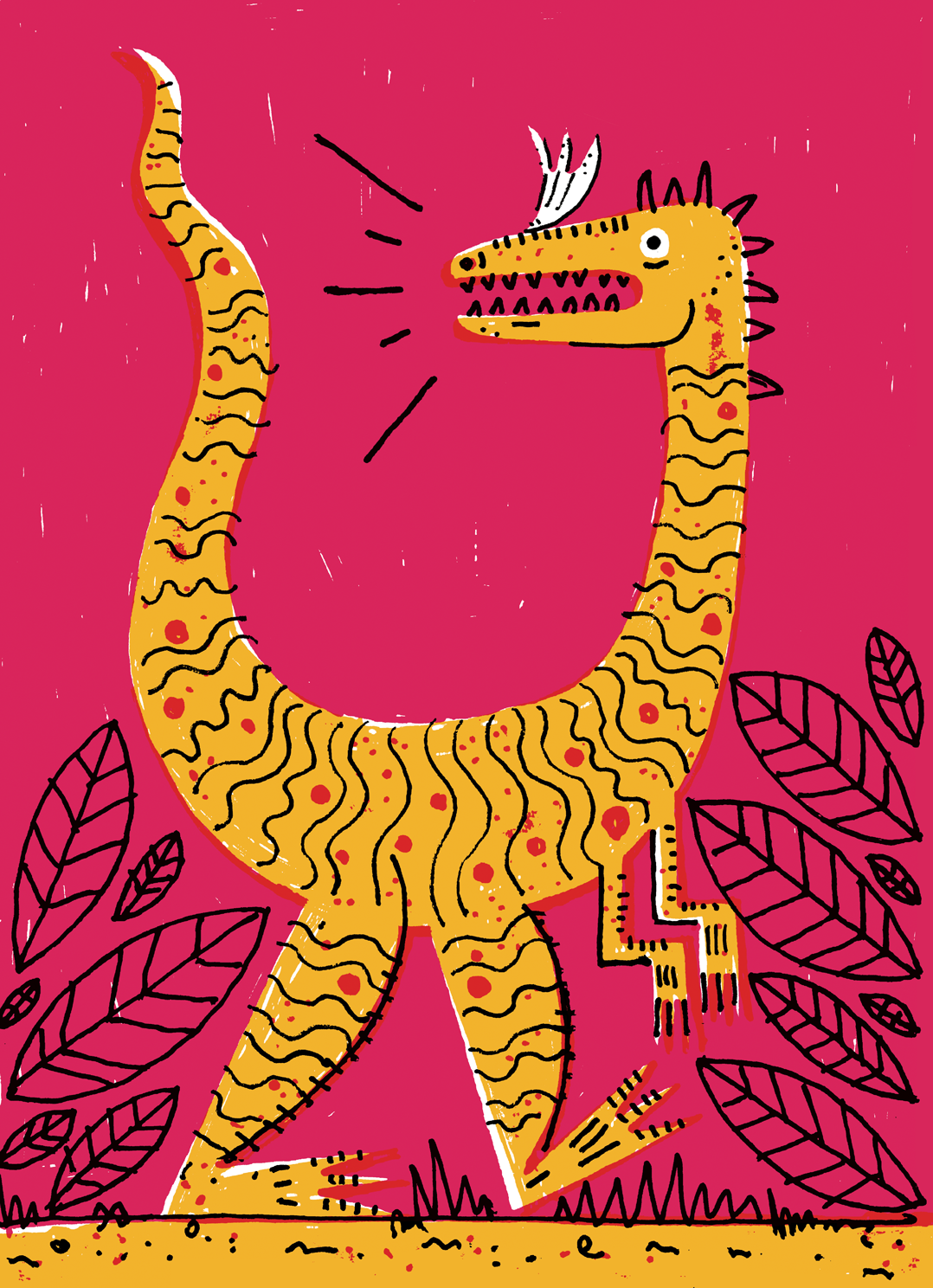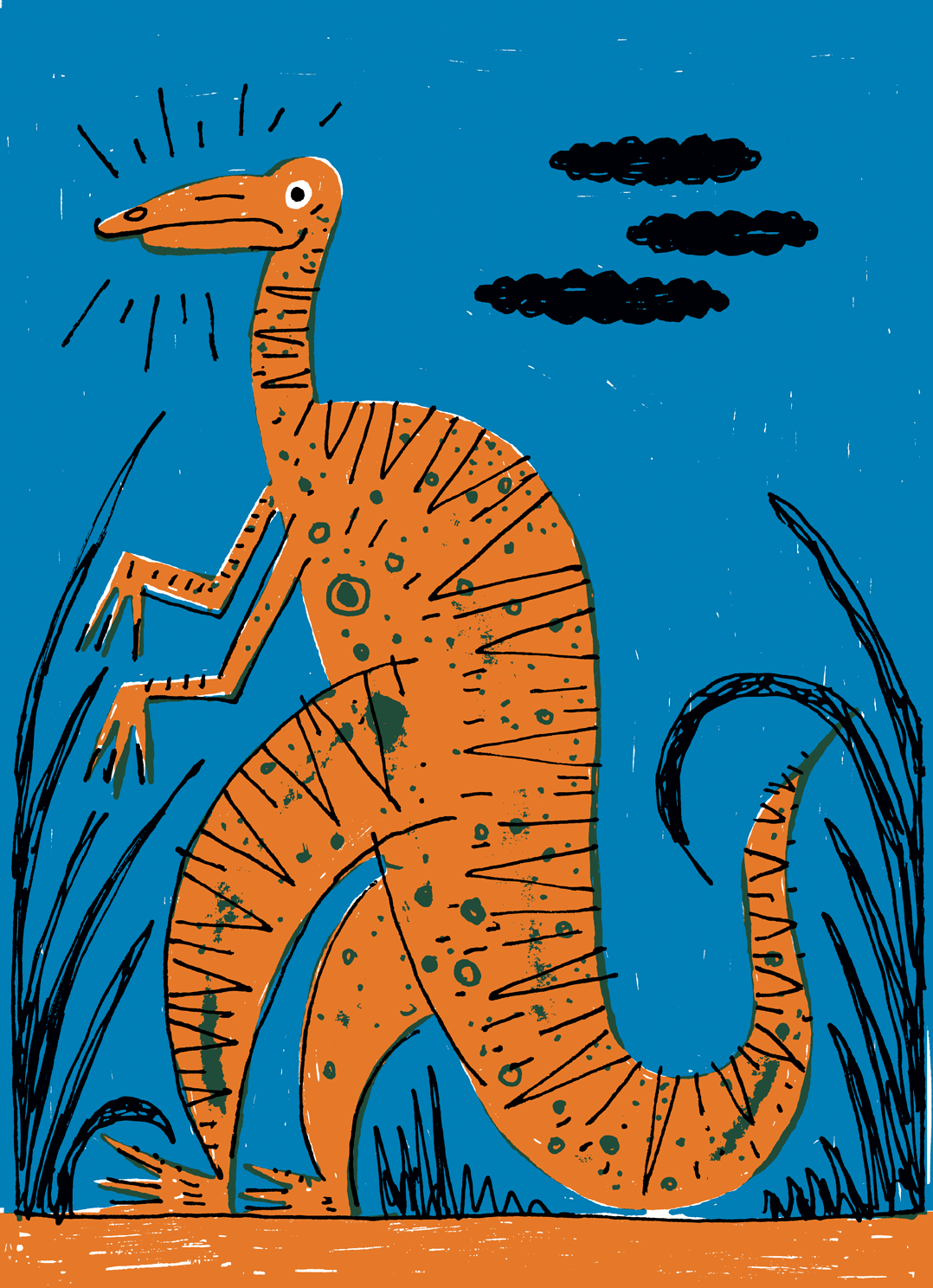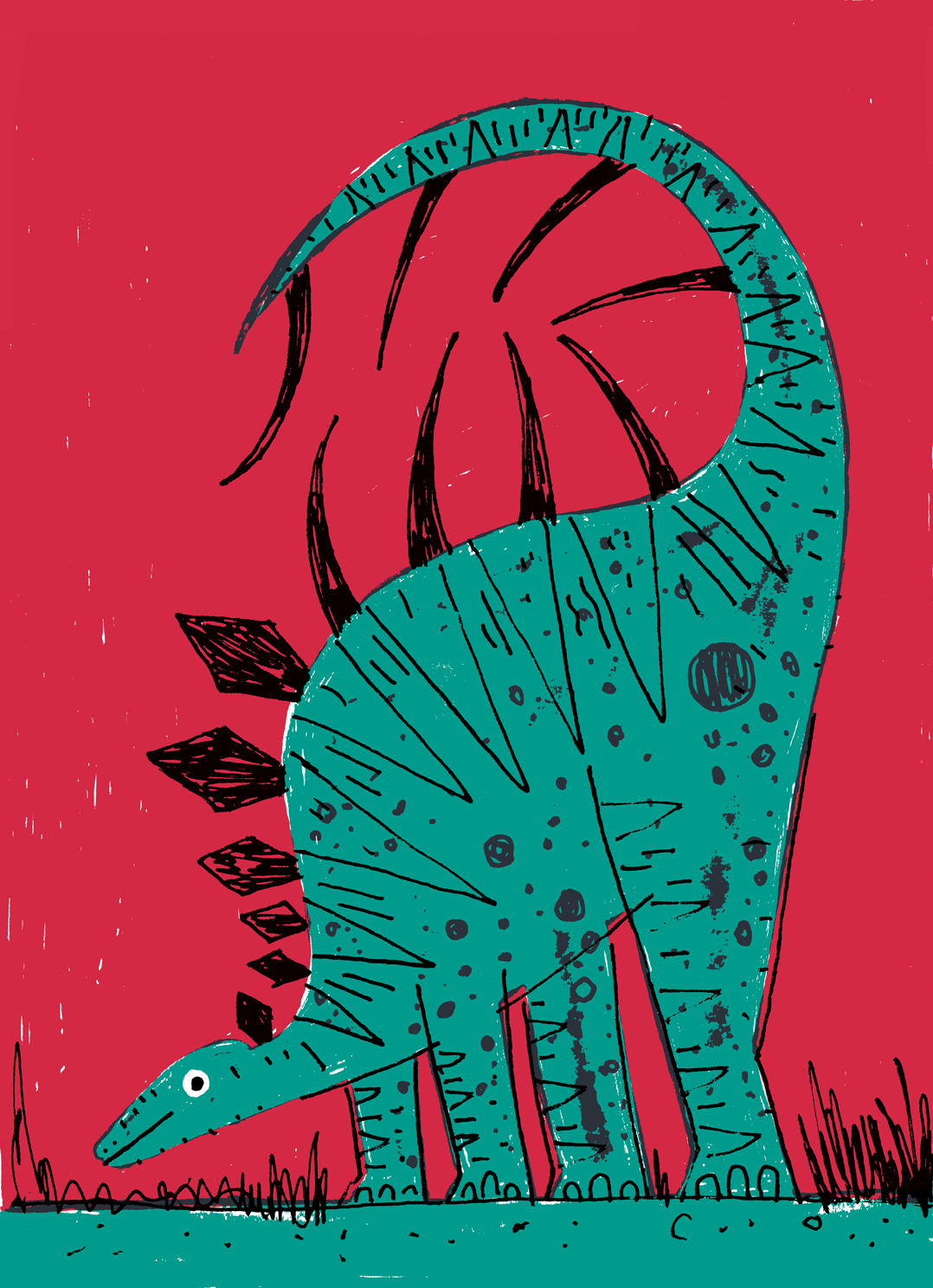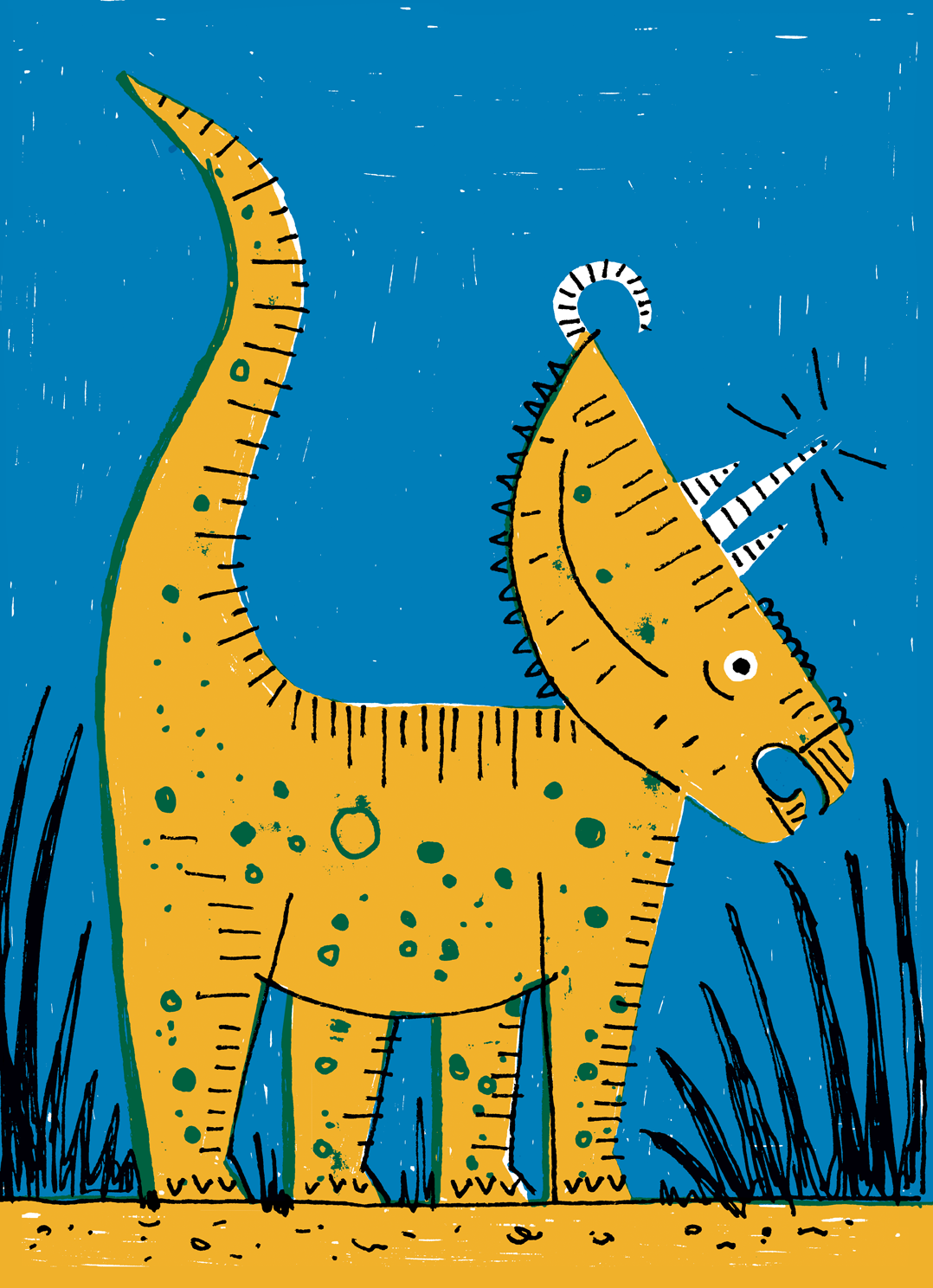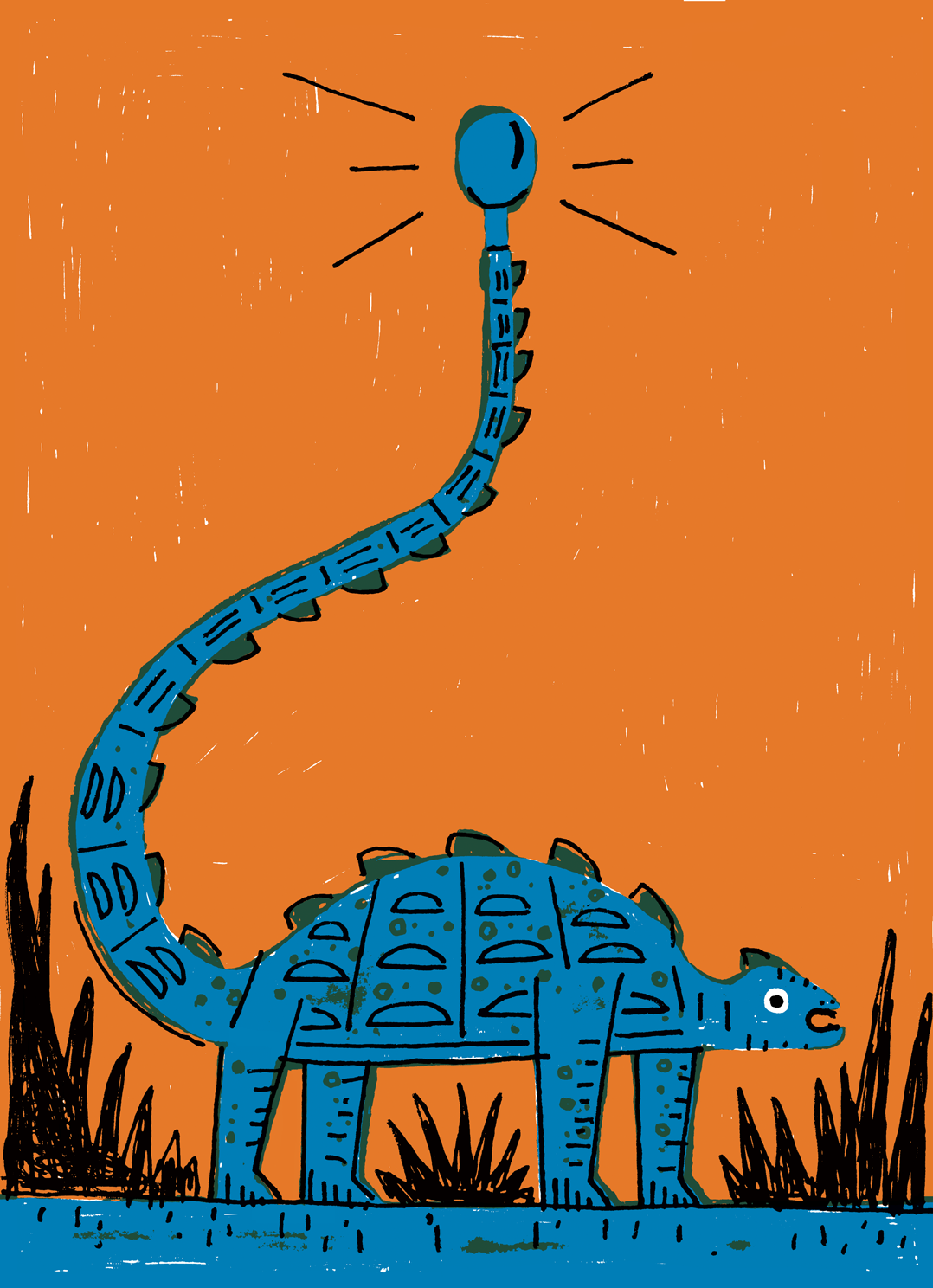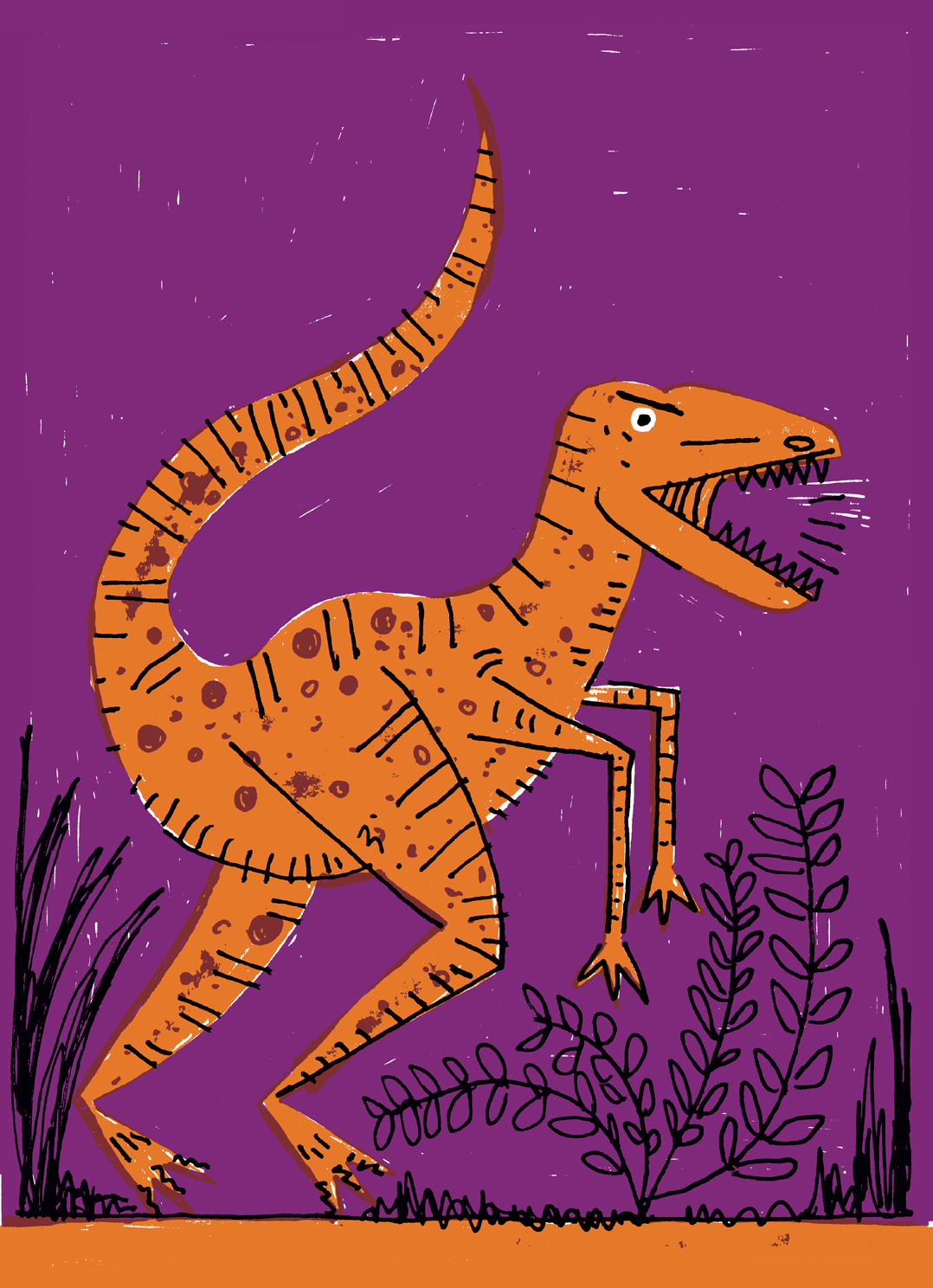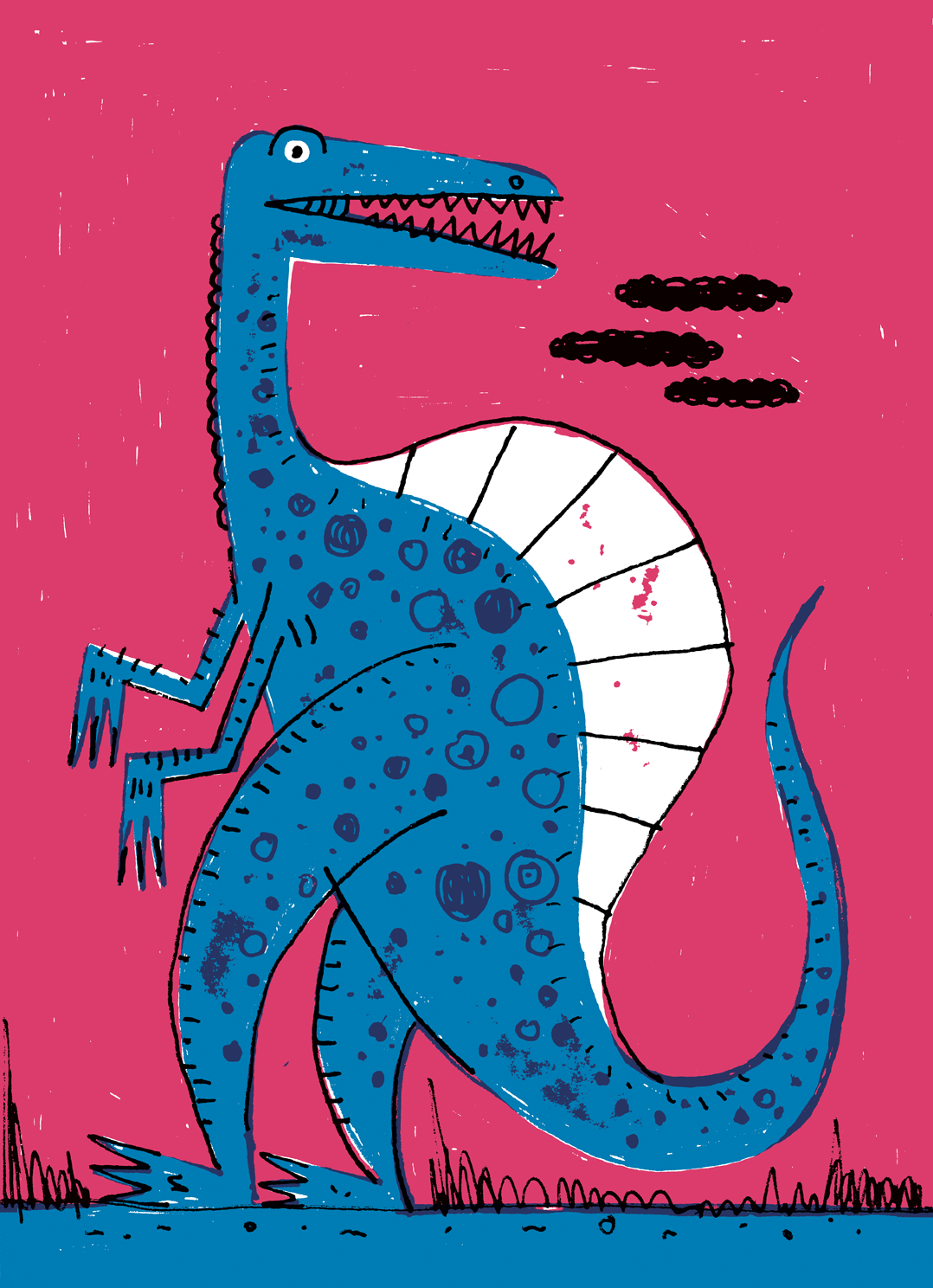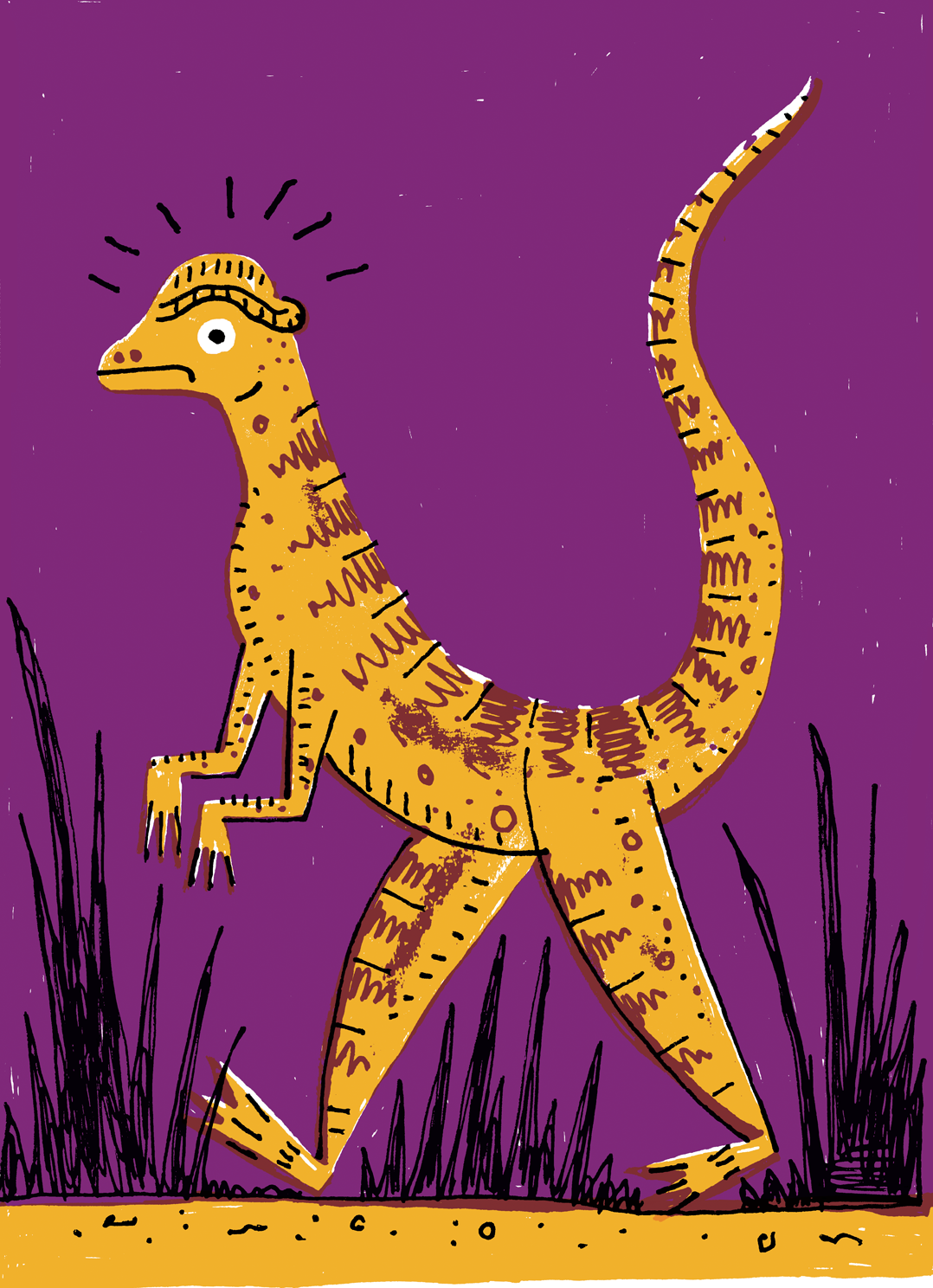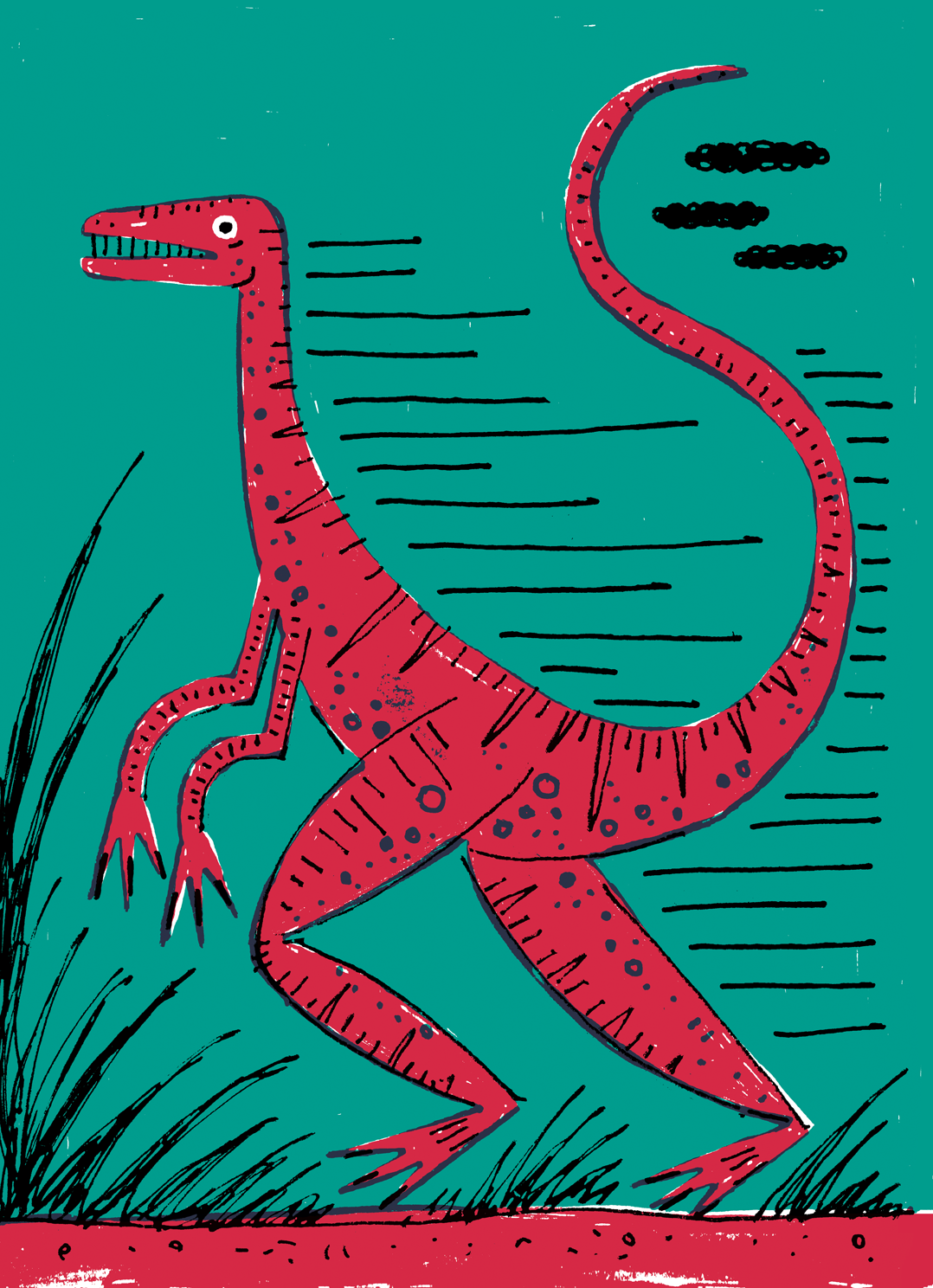The Dinosaurs
This collection by the eminent Canadian paleontologist Philip John Currie features his 15 favourite dinosaurs. Always eager to share his passion, he wrote these texts somewhere between Antarctica and Greenland.

Argentinosaurus
This sauropod lived in Argentina some 80 million years ago and is probably the largest animal ever to walk on land. Estimates of its body weight place it at roughly 100 metric tonnes. Its relatively small head came in handy in acquiring food, which it did by stripping leaves and twigs off branches with its teeth. Much like pigeons, the Argentinosaurus swallowed its food whole, which was then ground up by stones in its digestive system.
N8L3S
Tyrannosaurus rex
Since it was first given a name in 1905, approximately 30 Tyrannosaurus rex skeletons have been excavated in Western Canada and adjacent parts of the United States. It lived at the very end of the age of dinosaurs and was one of the most well-adapted predators, possessing bone-crushing jaws and teeth as well as long, powerful hind legs.
K4G7Q
Kentrosaurus
The Kentrosaurus was set apart from its close relatives by the double row of spikes running down its back and tail, rather than the rectangular plates found on the Stegosaurus. It is likely that the tail was used both for identification by other members of the species and for protection from carnivores.
L9Y4B
Spinosaurus
One of the largest carnivorous dinosaurs ever to live in Northern Africa was the Spinosaurus. Its long skull and arms indicate that it could have lived underwater, where its peg-like teeth would have been handy for capturing fish. This dinosaur had close relatives in Europe and South America.
E8S6A
Deinocheirus
This dinosaur was first discovered in Mongolia in 1965. A pair of long arms and enormous claws were, until recently, the only fossils found of the Deinocheirus. More than 50 years after the original discovery, new specimens reveal that it was distantly related to the Tyrannosaurus rex, despite its resemblance to the ostrich and the fact that scientists believe it was a herbivore rather than a carnivore.
Q3D5K
Chasmosaurus
The long frill extending from the back of the skull and over the neck of the Chasmosaurus made this 75-million-year-old dinosaur visually distinct from other horned dinosaurs. Ceratopsians were plant-eaters, and some species lived together in large herds.
D7C9T
Pachyrhinosaurus
One of the most common horned dinosaurs, the Pachyrhinosaurus had thick masses of bone over its eyes and nose, and a frill that extended from the back of the skull and covered much of its neck, a bit like its nearby relative the Triceratops. Huge bone beds in Alberta have shown that it lived in herds at certain times of the year, likely during migration.
V7N9P
Stegoceras
The Stegoceras was a small, dome-headed dinosaur that lived in the western half of Canada. Its skull made it identifiable to fellow members of the species and gave it an intelligent look, although its brain was relatively small and protected by a very thick skull roof. The Stegoceras likely used its head for ramming rivals and predators much as mountain sheep do today.
Q8G3L
Microraptor
The Microraptor and its relatives were chicken-sized, feathered dinosaurs closely related to the Velociraptor (one of the stars of the Jurassic Park movies). These species lived in China and North America approximately 100 million years ago, and survived until 65 million years ago. The long, birdlike feathers behind the arms and legs would have allowed this dinosaur to fly between trees.
V3Q7A
Cryolophosaurus
The Cryolophosaurus lived on the world’s southernmost continent almost 200 million years ago. At the time, temperatures were much higher than they are today. Its name, which means frozen crested lizard, was given to the skeleton found in Antarctica. This carnivorous dinosaur had a crest on top of its head resembling the scoop of a snow shovel.
Y6T5L
Pinacosaurus
This armoured dinosaur inhabited every continent between the Arctic and Antarctic; many specimens were discovered in China and Mongolia. It is likely that the young lived and travelled in large groups. The adult’s upper body was covered in a bony armour and its tail ended in a large bone club used for defensive purposes.
V6N4R
Troodon
The Troodon was one of the first dinosaurs to be named in North America, based on a single tooth found in Montana in 1856. Though physically slight, it had the largest brain of any known dinosaur, six times that of a similar-sized crocodile. Closely related to the earliest birds, the Troodon was an extremely fast runner.
P3V7K
Parasaurolophus
This duck-billed dinosaur lived in western North America. It is thought that the hollow, tube-like crest on top of its head existed to let adults recognize other members of the same species. The air passed from the nose to the throat through this tube, which was probably used to amplify sound, like some musical instruments.
E9C5B
Edmontosaurus
The Edmontosaurus was one of the most common duck-billed dinosaurs to exist in the last ten million years of the age of dinosaurs. Its fossils have been found all the way from Alaska to Wyoming, as well as in Edmonton, Alberta.
B9N8S
Sinraptor
Found in the Gobi Desert of China in 1987, the skeleton of the Sinraptor is almost 8 m long. This meat-eating dinosaur was capable of killing (and eating) the long-necked sauropod dinosaurs that lived in that region some 120 million years ago. Sinraptor means “Chinese thief”.
X5C6K
Sed ut perspiciatis unde omnis iste natus error sit voluptatem accusantium doloremque laudantium, totam rem aperiam, eaque ipsa quae ab illo inventore veritatis et quasi architecto beatae vitae dicta sunt explicabo. Nemo enim ipsam voluptatem quia voluptas sit aspernatur aut odit aut fugit, sed quia consequuntur magni dolores eos qui ratione voluptatem sequi nesciunt. Neque porro quisquam est, qui dolorem.
montrealsciencecentre.com